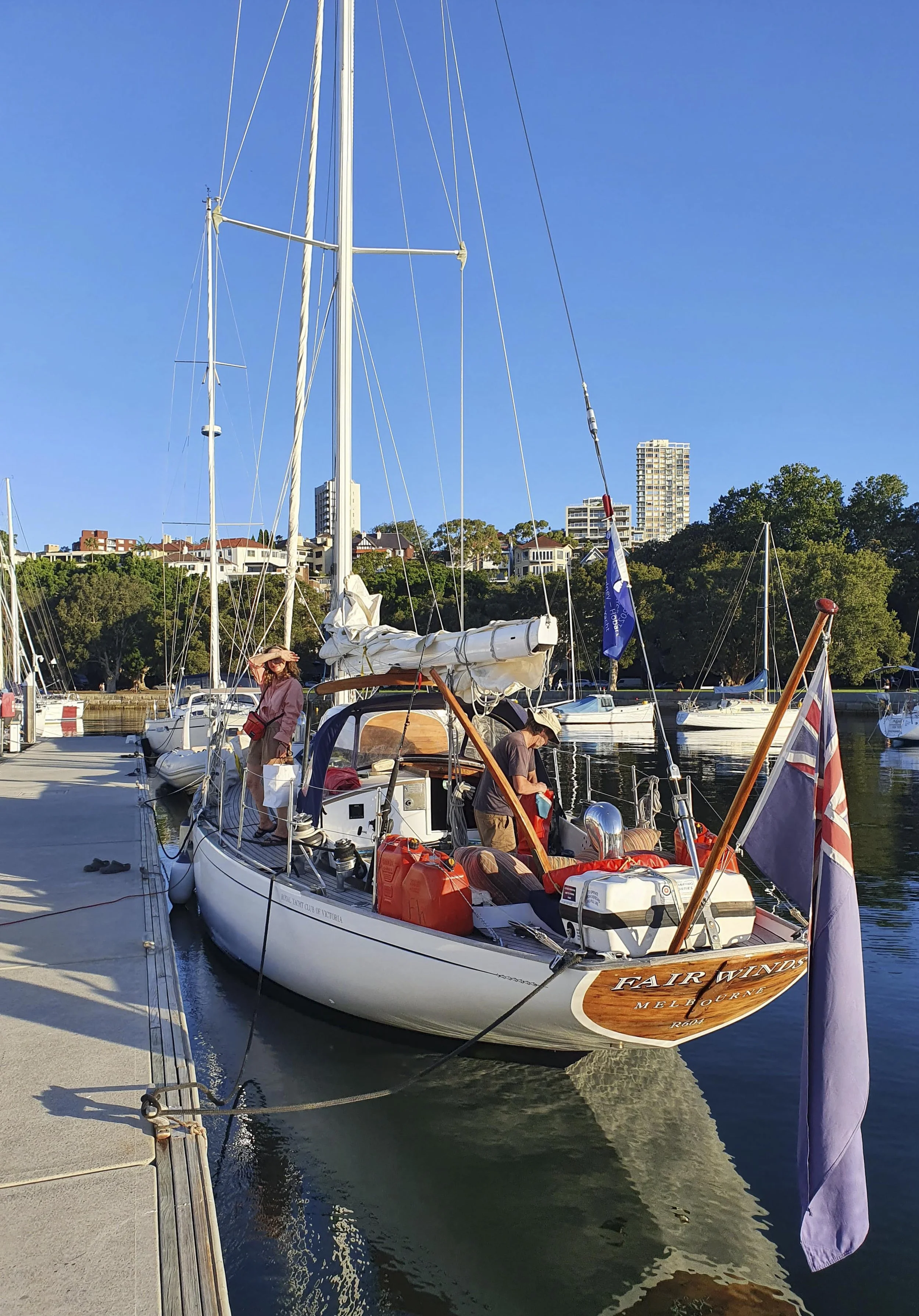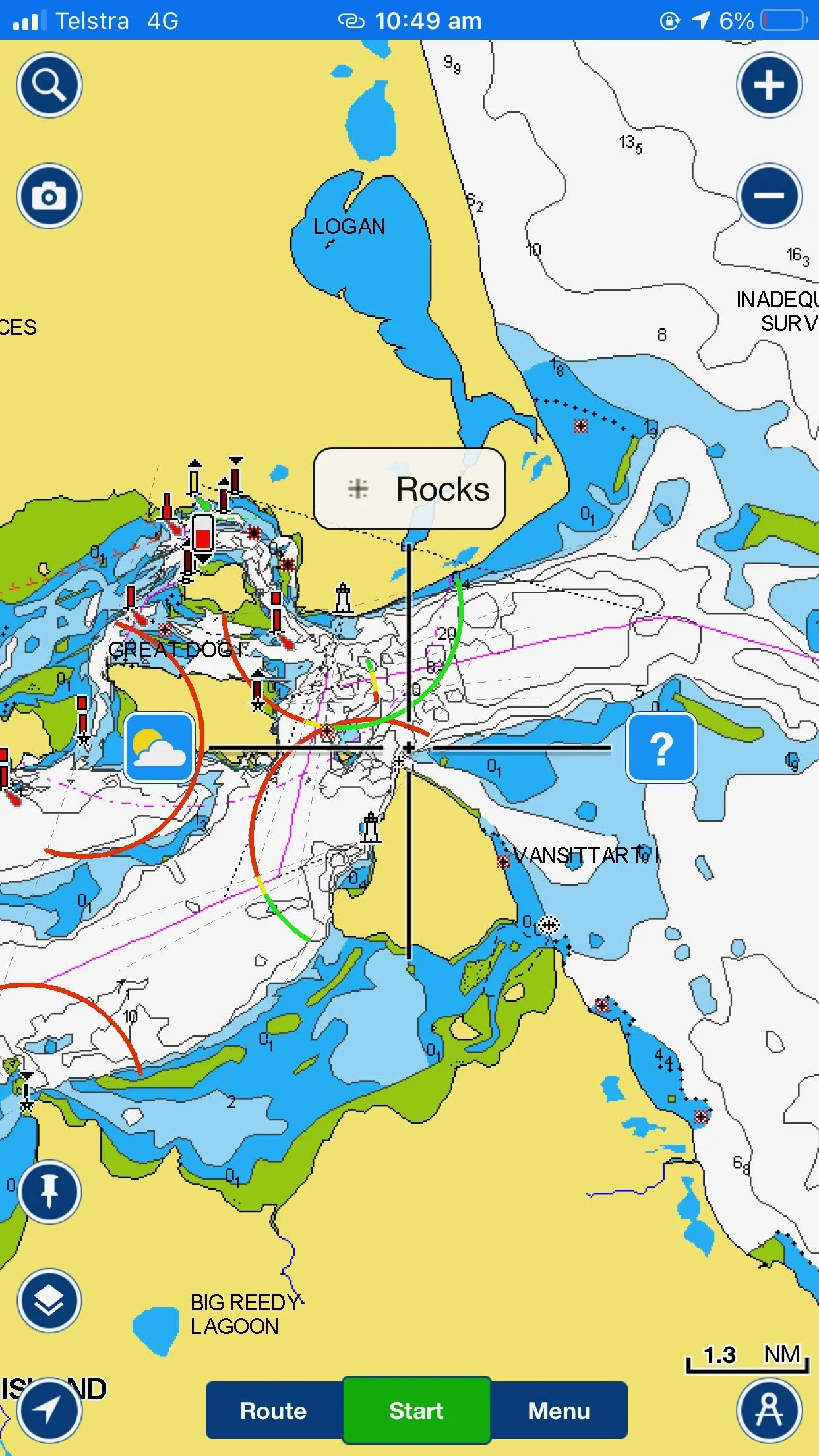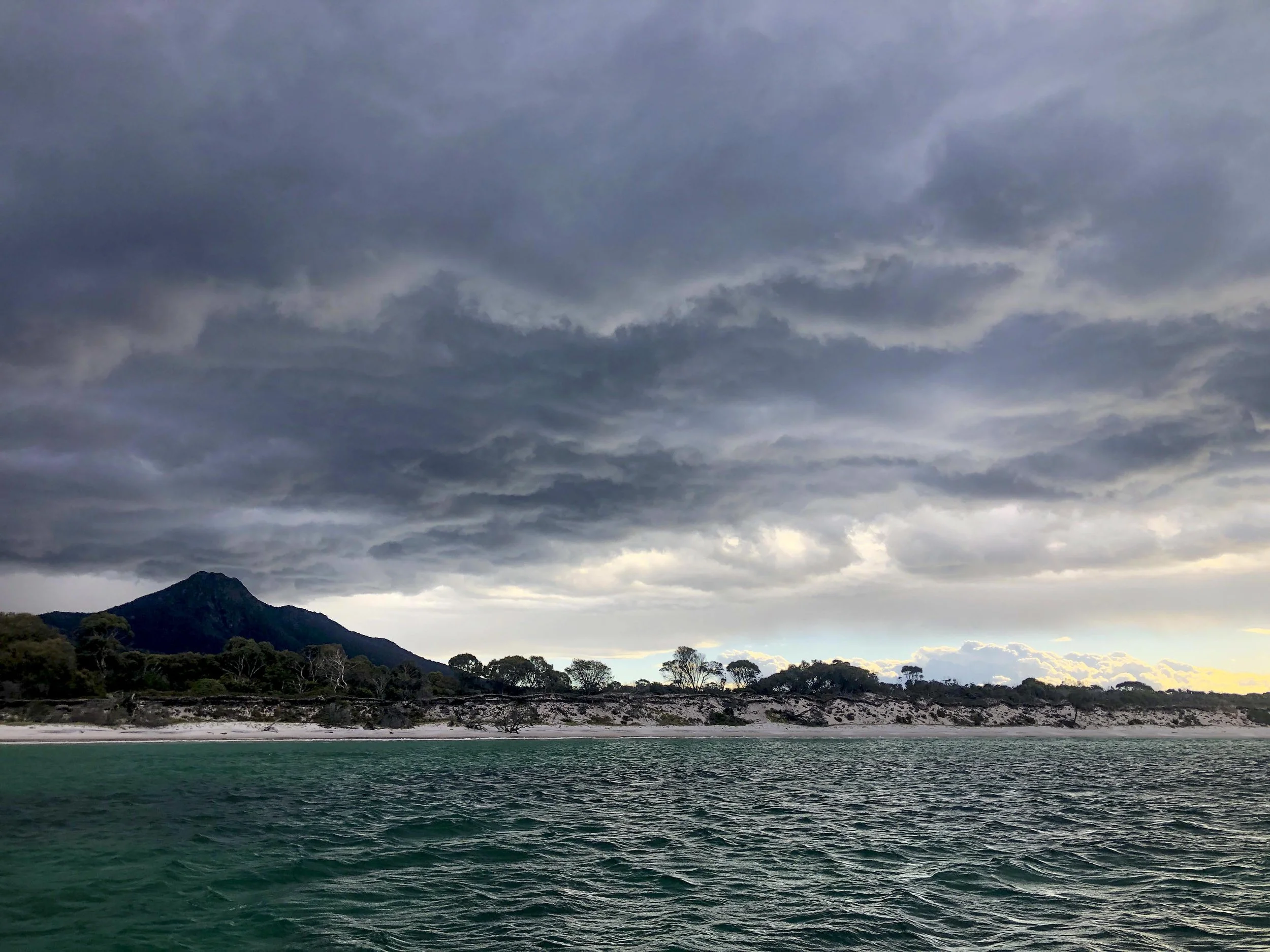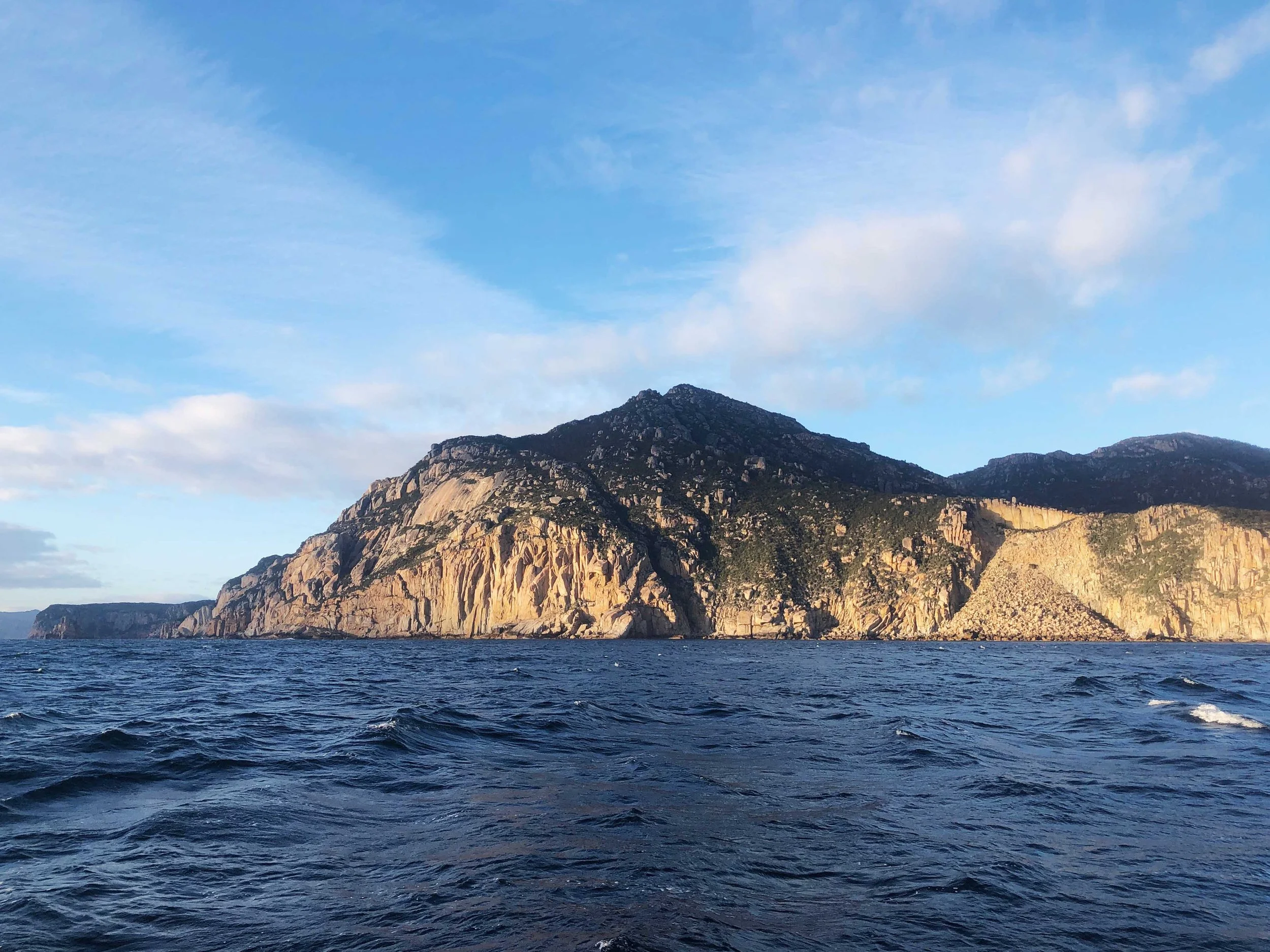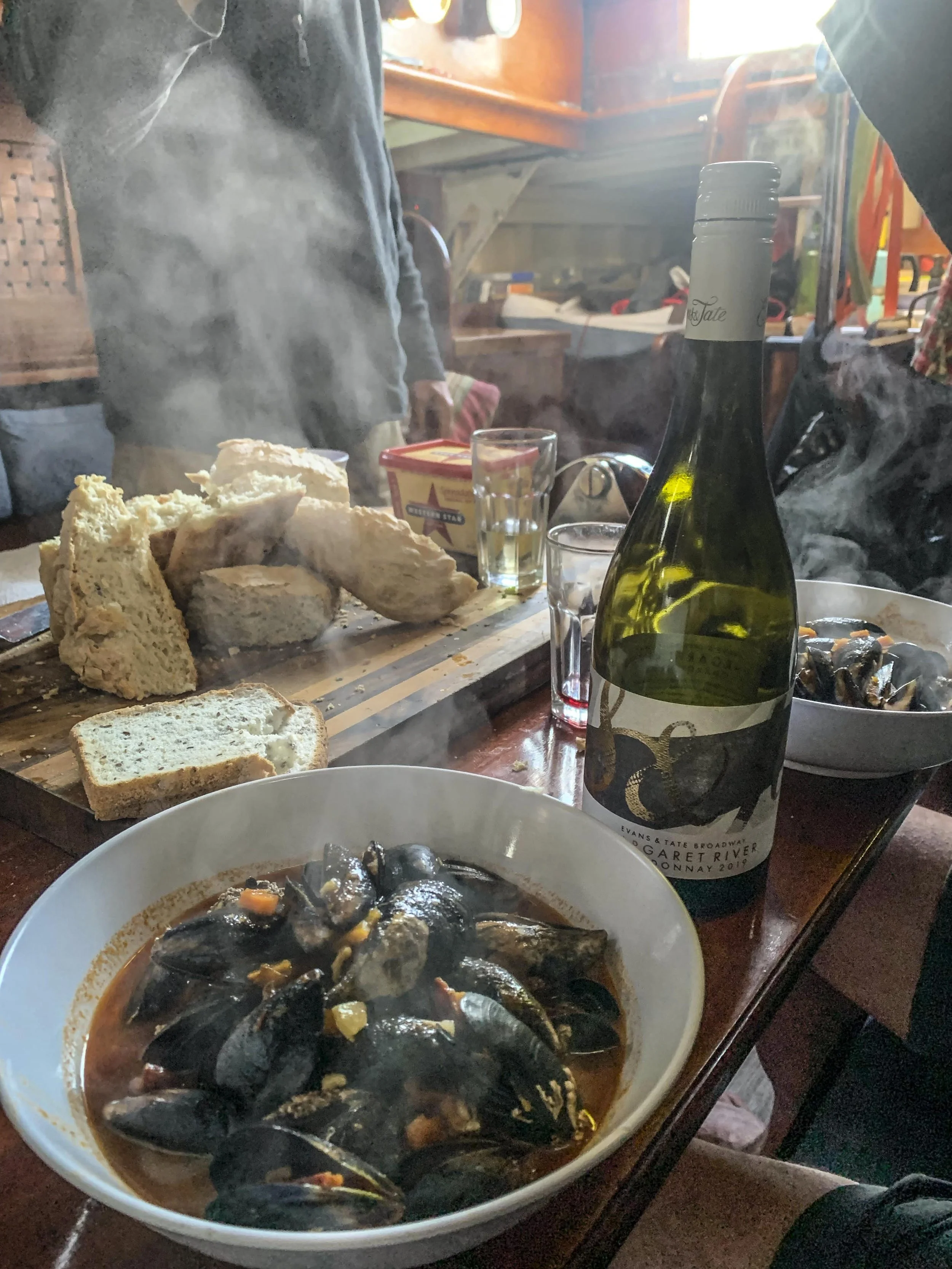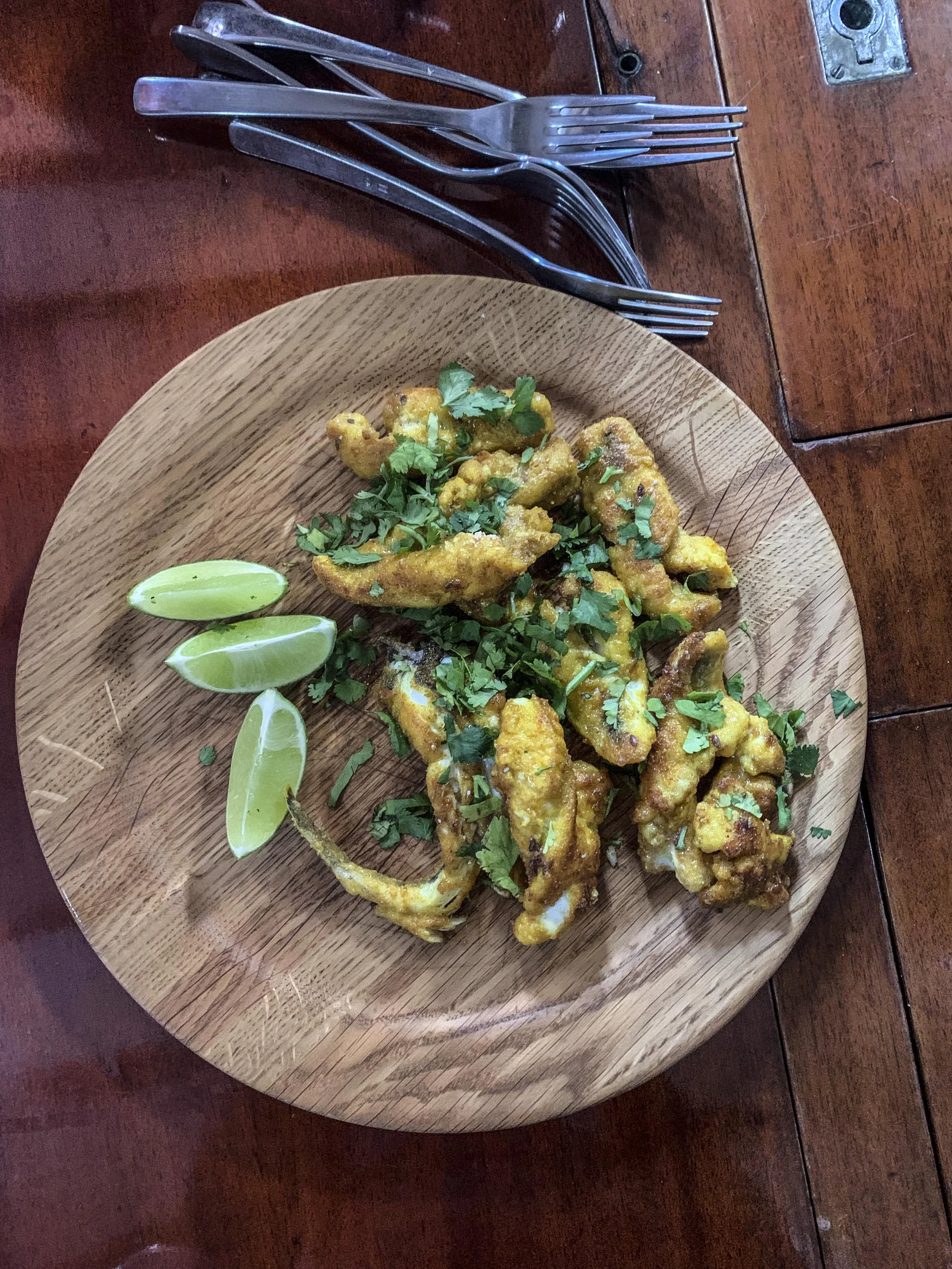From Gadigal to Nipaluna Country. A Not Race
For some reason it made me sad to see AIS icons of glamour yachts Already travelling north, back up the east coast, on December 30th & 31st. They may have crossed the Sydney-Hobart finish line, but the real heroes of the race were still out there, Clawing their way south to THE Derwent, to complete the slowest race for 17 years.
In many ways ocean racing has become a monoculture. To succeed you must be skilled and tough and rich, but for most owners with a realistic chance of victory, the broader values, ambitions and motivations of the founders of the event have disappeared amid the ruthless need for a trophy. (QED the protest circus at the conclusion of the race.)
The first ‘Hobart’ sailors were friends from the newly formed Cruising Yacht Club (now the Cruising Yacht Club of Australia), who decided on a summer cruise together to Hobart. Before they left Sydney, British yachtsman John Illingworth joined the group and proposed making it a race. The Royal Navy captain had been stationed in Sydney during the war. It was just months after the armistice and life was returning to its peace-time rhythms. In the interests of keeping the focus on ‘cruising’, spinnakers were not permitted.
Don’t misunderstand me. I love the thrill of going fast and the affirmation of winning as much as the next person. It’s just that there’s so much more to sailing than the current deep and narrow channel, especially if you own an old wooden boat.
Departure preparations at the CYCA
So, with this in mind the crew of FAIR WINDS set off from Sydney Harbour at around midnight on December 13th with the aims of sailing efficiently and safely, seeing some places on the way, living wholly immersed in the environment around us, enjoying each other’s company and arriving in Hobart a few days before Christmas.
Some background… FAIR WINDS is a 66-year-old timber sloop built in Germany by Abeking and Rasmussen to a design by the legendary American Naval architect Philip Rhodes. Offshore, we like to sail with five crew… We run a strict but non-onerous watch system of two hours on, two hours off, with a four hour break every second off watch. Simple, well cooked food is an essential part of our voyaging. We wash up in a bucket, we hand steer every mile, we treat safety seriously.
The 200 NM trip from Sydney to Eden can and should be broken up into smaller sections. We love Jervis Bay and Bermagui but on this occasion the forecast northerly was short lived, and we were under a little pressure to make the most of it. In fact, the weather windows offered over the whole trip pretty much did the route planning for us.
Eden has always been kind to me. Even in a big southerly, an anchorage off the soon to be cancelled Boydtown is a a melancholy pleasure, and if the wind allows, tying up to the north side of the most northerly jetty, allows you to enjoy the town. (Don’t forget your barging board.) The electorate of Eden Monaro has always been labelled a “bellweather seat” and the cynic in me sees the many developments in the town as confirming this status. The port is being expanded to take cruise ships, there is a new and beautifully designed visitor centre (which also houses the port authority) and the pub in the main street is starting a fresh life as “a visionary new address set to reshape and revitalise a beloved coastal haven”. Hmmmm.
The Harbour in Twofold Bay
Tasmanian biosecutity requirements meant a quick trip to the new hospital in Bega for a Covid test and then having changed the fuel filters and removed 300ml of water and sludge from the diesel tank accumulated from 18 months of neglect on a mooring in Sydney (Covid again) we sat tight while the south westerly petered out and then we headed out into a calm Tasman Sea, passing Green Cape around midnight with a full moon overhead.
[A side line….If anybody out there with a genuine knowledge of the subject wants to write an article about how to keep growth/water/contamination out of a boat’s diesel tanks, and what the ramifications of biocides etc are, it would be much appreciated by our readers. I have recently heard of 6 cases and I think the problem could be worse than we imagine.]
Crossing Bass Strait was fast and furious. Our standard downwind cruising set up is main with preventer and poled out furling jib.
Tethers on. Flag at half mast. (it slipped!)
By 1000 we had 18 knots behind us…in with one reef. By 1200 we had 25 knots...in with the second reef and furl half the heady. By 1600 30+knots… in with the third reef and a couple more rolls on the heady. The boat surges down the waves clocking between 6 and 9 knots. You have to be active on the long mahogany tiller but with full keel and the centreboard down she tracks along well. A timid flap of the jib lets you know that you are too square and so you push the helm away, come up a few degrees and off you go again. Not too much… or the helm will load up as the apparent wind increases and she’ll want to reach off across the 3 meter waves. It’s a challenging game…never by the lee, and never too hot… it’s fun…but stay alert!
Some things we read along the way
“The Year of the Runaways” by Sunjeev Sahota
Again, the short window of northerly wind put paid to our visit to Flinders Island. I didn’t really feel comfortable negotiating the infamous Franklin Sound from the east into Lady Barron in the dark, and so we pushed on past the eastern end of Banks Strait, timing the run perfectly as we were sucked towards the entrance until we were due east of the Strait and then spat out down the East Coast of Tasmania as the tide began to ebb.
I used to be intimidated by the tides in Banks Strait, probably the result of a badly planned passage about 10 years ago, but nowadays by imagining the incoming tides rising up to a ridge in the middle of Bass Strait and the ebbing tides flowing out to both the east and the west, it makes working with the huge flows of water more logical. And then there’s always Navionics!
So, having bypassed the Furneaux Group we started looking for a place to anchor along the North East Tasmanian coast. The issue was that the northerly was still blowing, but as soon as it stopped a brisk south easterly was forecast. We needed a fully protected bay and there is no such thing until you get down to Schouten Passage. So, we spent an uncomfortable evening scurrying from the entrance to St Helens around to Binalong Bay just as the change came through. Anchoring in bays open to the ocean is never relaxing, but there is deep satisfaction in knowing that the pick is well in and despite the clunk, clunk of the tins of tomatoes rolling back and forwards in the locker, the boat is safe, and some rest is possible.
A quiet drink to celebrate the crossing.
The passage from Binalong down to Wineglass Bay was notable for two things. The first was the number of dolphins. For eight hours from horizon to horizon we were tracked by huge pods of big bottle nosed dolphins. They jumped and spun and rode the bow wave all day long…twisting to look up at the strange, two-legged, clumsy figures on the deck above them yelping with delight.
The second thing that I will remember is this polished disk of a cloud. It was beautiful, but ominous, and no doubt a portent of the 40 knot gusts of wind we were to encounter going through Schouten passage the next day.
Most of us know about Wineglass Bay. It’s one of those rare places where the reality lives up to the tourism poster. By tucking right up near the beach in the southernmost corner (centreboard up!) we managed to avoid the left-over northerly swell and spend a comfortable night protected from the strong westerly airflow whistling overhead.
Wineglass Bay
The next morning found us reaching down the last 8 miles of unprotected water past the awe-inspiring Lemon Rock towards Schouten passage, and then motoring through the gap into 35 plus knots and a steep short sea.
With SOG hovering between one and two knots, no doubt the hobby horsing motion stirred up the diesel tank again and the engine began to surge as the contaminated fuel reached the injectors. It was a worrying time until we had made enough westing to bear away outside Black Reef, turn the engine off and sail down the Mercury Passage. The engine issues led to a stressful afternoon as the wind went further south west and forced us to beat off the lee shore of Maria Island with three reefs in the main and a handkerchief of headsail. After a few hours of struggle and a new appreciation for Antoine Bruni d'Entrecasteaux and Abel Tasman, we were able to lay the entrance to Shoal Bay on Maria Island and coast onto the anchor under headsail. And evening of filter changing, and tank bleeding restored our confidence in the engine. We would need it the next day as we navigated the bar at the tricky entrance to Blackman Bay and the Dunalley Canal.
The strongest winds of the trip greeted us as we came out of the canal. Heading for the Iron Pot, and the earthly delights of Hobart we saw 47 knots on the B&G and decided that Hobart could wait. We reached off to Ironstone Bay on the Tasman Peninsular and enjoyed an evening of flathead fishing and mussel gathering.
Boat baked crusty bread and a glass of red topped off the meal before the wind moderated just sufficiently for us to make the 30 mile dash around the corner and up the Derwent.
It was a strange feeling crossing the Sydney Hobart finish line a few days before the race was due to start. I’m truly in awe of the dedication that the owners and crew put into racing to Hobart. And I’m tempted to do it again one day myself. But as the crews turn around after a few beers and a hot shower and head to the airport, I can’t help wondering if the things they missed out on….the foraged food, the touch of a dolphin, the advice at midnight from a friend, the smell of a cup of freshly brewed coffee coming up through the companion way at dawn….was worth the glory.
Many Thanks to FAIR WINDS’ wonderful crew.
Sal Balharrie
John Donati
Antony Perri
Charlie Salter.
And CC and RD…we missed you!


